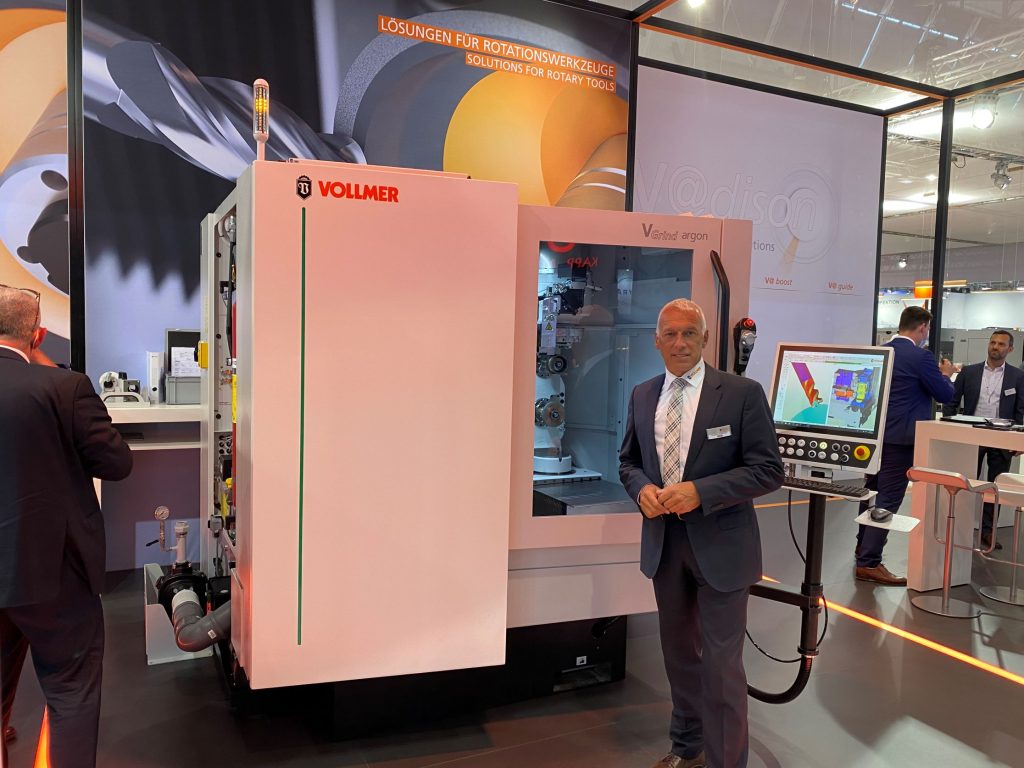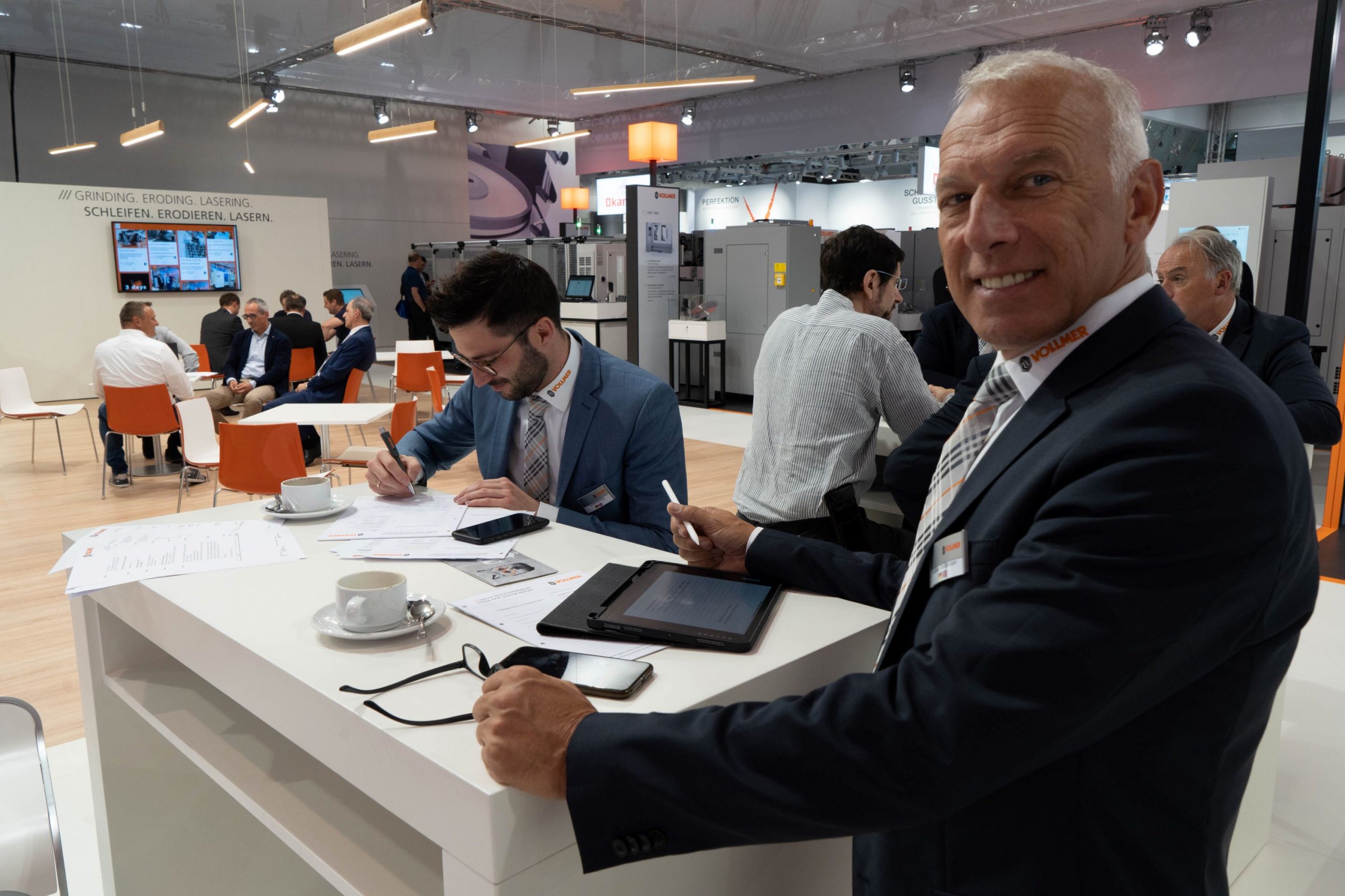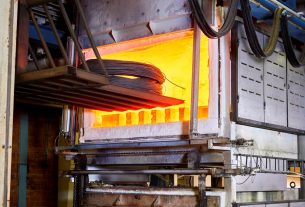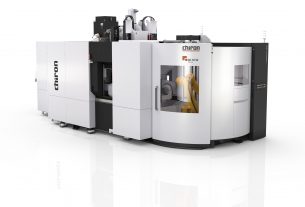When it created a vertically positioned twin-spindle tool and cutter grinding machine concept back in 2014, VOLLMER broke all the realms of convention with its VGrind. The reward for this bold and ingenious design was an extremely successful machine that after almost 8 years of evolution, has become one of the industry’s best-selling machine tools.
Seen as a radical shift in machine design when it was launched, the Biberach manufacturer has incrementally progressed the technology behind the VGrind. Now, conducting extensive industry research and absorbing customer feedback, VOLLMER is driving the VGrind forward with the launch of three new additions. With the GrindingHub exhibition in Stuttgart providing the platform to launch the new VGrind neon and argon ‘packages’ and the VGrind 260 machine, we speak with Andreas Weidenauer, the Business Development Manager for Tool Grinding at VOLLMER to find out more – particularly concerning the VGrind 260.
Discussing the journey of the VGrind, Andreas recalls:
“When we launched the VGrind, VOLLMER was new to the tool and cutter grinding market. As a new market entrant, this is always a challenge as you have to sell the advantages to the customers such as the polymer concrete base, the two spindles, the fixed bearings and so on. Our target was to have a very accurate machine with almost zero warmup cycles. Sales were slow in the first year as you have to convince the market, but the customer used as a ‘test-bed’ was convinced and they soon bought one machine, then a second and third – building up to 9-10 machines quickly. This customer scaled up quickly with the VGrind and others soon followed. Now, the VGrind is extremely well received worldwide as a proven and productive high-performance machine and I believe it is VOLLMER’s fastest-growing range as it started from nothing and is growing rapidly year on year.”
Like every machine tool manufacturer, VOLLMER acknowledges that creating a continuous feedback loop with customers is essential for continued success. To expand market penetration of the VGrind, VOLLMER’s industry feedback has led to the arrival of the neon, argon and VGrind 260 machines – solutions for cost-conscious machine shops with somewhat limited automation requirements.
Looking at the three new machines, Andreas says:
“They are three packages. The VGrind concept has stayed the same since 2014, but we have evolved the product with the introduction of things like different drives, different spindles, more power and different loading systems.”
“The VGrind 260 incorporates ballscrew drives whereas the existing VGrind 340S and 360S variants are linear drive machines, this lowers the cost barrier for small businesses and makes the technology more accessible for a diverse audience. We have to look at the VGrind 260 machine as a package. It was created as the foundation base for the neon and argon variants. The VGrind 260 is the configurable base model that can be tailored to meet the exact needs of the end-user whereas the neon and argon machines have restrictions on the available options. The limitations on factors like automation and grinding wheel changer in the neon and argon machines are reflected in their market entry point. What the VGrind 260 model allows customers to do, is review the various packages available and create a machine that suits both their needs and budget.”
“If the customer has any requirements that do not fit within the parameters of the argon or neon packages, then we can offer the Vgrind 260 which is the third of the new machines. This machine can be configured open and freely to the customers’ requirements. With this machine, you get everything with regard to flexibility. You can have an external or internal tool loader, the eight-station wheel changer, steady rest and everything else – you can configure every conceivable option that we have.”
What are the options?
The VGrind 260 is all about flexibility. As well as being equipped with tried-and-tested kinematics and the double spindle for precise multi-layer machining, the selling point of the VGrind 260 is that manufacturers can build it to meet their precise requirements – from automation and coolant distribution to configuring the spindles and more.
Like any VGrind machine, it can be accepted that the new VGrind 260 incorporates the two vertical spindles that pivot on the C-axis, the unfathomable VOLLMER IoT gateway that gives customers entry to the world of Industry 4.0, the NUMROTOplus software with 3D tool simulation and of course, the polymer concrete foundation and proven kinematics that gives the VGrind series its industry-leading performance. Atop the proven fundamentals, the VGrind 260 gives customers more options than they could ever wish for.
For example, both the upper and lower grinding spindles can be fitted with various grinding wheel packages for seamless production. This includes the four or 8-station grinding wheel changer with or without the interchangeable coolant adaptions – on one or both grinding spindles. From an automation perspective, customers can choose from a range of options that is more expansive than ever before. The options for external automation include the HP160 pallet magazine with a double gripper for up to 900 blanks or tools, the HC4 chain magazine with space for up to 158 shank tools. To keep the floor area to a minimum, manufacturers can also select the internal pallet loader. This system incorporates two neatly positioned pallets that can facilitate 300 tools or blanks and universal pallets for chaotic loading of different shank diameters are also available.
But the options don’t end there. Customers can also select grinding spindles with direct or belt drives, wheel measuring probes for wear control, gripper compensation units for safe and precise loading and unloading, a sticking unit for opening the abrasive coating on grinding wheels, automated changing of the intermediate sleeves with a bayonet, a fully adjustable steady rest with automatic stroke and much more. Essentially, the VGrind 260 provides every possible option for grinding tools with a maximum length and diameter up to 360mm and 200mm respectively.
Giving his perspective on the new argon, neon and VGrind 260 machine, Andreas adds:
“In every instance, you have to ask the customer what type of tools they are producing, the diameter range and what exactly they are looking for. With the new packages, the customer has more options than ever before. With the argon, we have developed a machine to fit the needs of the customer. If a customer says they want a machine for a particular type of tool with no need for automation, we can offer them the neon machine – If they require automation, we can enquire whether they want an internal or external loader; and if they are okay with a four-station wheel changer and an internal loader, we have the package for them with the argon. There would be very few optional features to add to these machines. For companies that want complete flexibility and even the option to add optional features as their business evolves – the VGrind 260 is the machine to choose.”
Environmentally conscious manufacturing
Whilst VOLLMER has presented three new VGrind variants with price points to suit the particular demands of its expanding customer base, the German manufacturer is also conscious of the manufacturing costs and environmental pressures its customers face. With inflation, material and energy costs all increasing – VOLLMER is continually innovating to reduce the operational costs of its technology and also the energy consumption and carbon footprint for its customers. This is also part of VOLLMER’s commitment to environmental sustainability.

As Andreas says:
“Energy costs are at the front of every customer’s mind and customers appreciate the energy efficiency of the VOLLMER machines. Additionally, they recognise the extremely short warm-up cycles and the ability of the machines to continually run with very little ‘non-cutting’ time. This is a very big plus. Customers also appreciate the minimal setup time, this contributes to the continuous operation and is increasingly important when customers are producing smaller batches of tools.”
Discussing the new heat plate exchanger that is a further cost-reducing feature for customers, Andreas confirms: “The internal cooling system on the VGrind is critically important to prevent any thermal growth within the machine as this retains precision, but using the chiller system requires considerable energy consumption. So, we developed a heat plate exchanger to replace the previous system. Now, we can handle incoming coolant up to 28 degrees C without any active chiller unit and this saves a lot of energy.”
“This has now been integrated into our new machines. When incorporated into our machines, it reduces operational costs and improves the environmental credentials and carbon footprint for our customers – it is also something that our competitors do not have. So, we may be slightly more expensive than competitor machines, but we have a higher quality product with better precision and repeatability, and of course lower running costs for our customers. Manufacturers want the best quality and most productive machine whilst reducing production costs, but we have to be conscious of our machine specifications and costs. So, we have to be very flexible to the needs of the market by offering universal solutions that have relatively low production costs and subsequently retail prices. This is where our new machines fit the specific needs of industry.”





